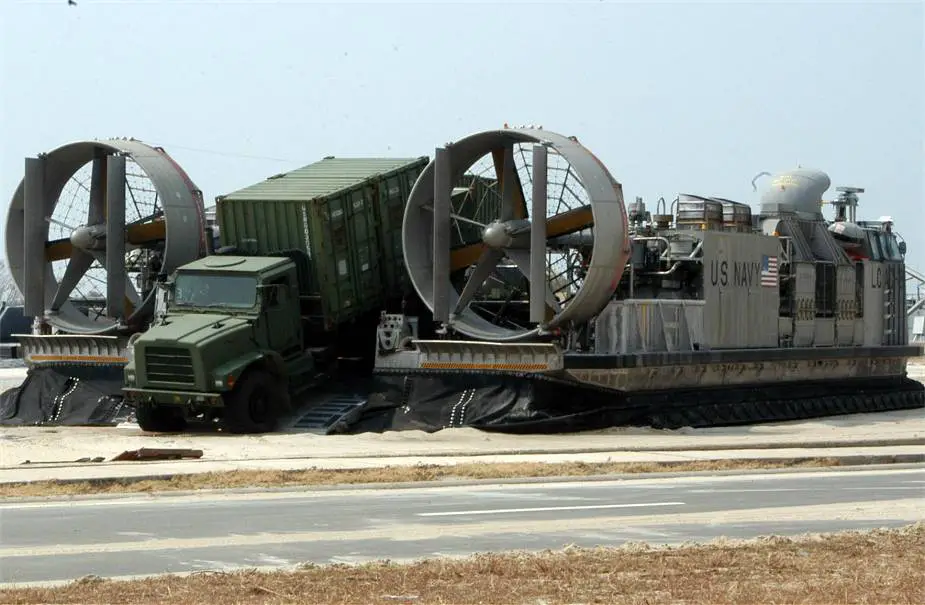Breaking news
Textron Systems has successfully delivered next generation of amphibious landing craft to US Navy.
According to a press release published by Textron Systems on August 27, 2020, Textron Systems Corporation, a Textron Inc. company, announced the successful delivery of its second next-generation air cushion vehicle, Ship to Shore Connector (SSC) LCAC 101, to the U.S. Navy on August 27, 2020.
Follow Navy Recognition on Google News at this link
 Air cushion vehicle for transporting, ship-to-shore and across the beach, personnel, weapons, equipment, and cargo of the assault elements of the Marine Air-Ground Task Force. (Picture source U.S. Navy)
Air cushion vehicle for transporting, ship-to-shore and across the beach, personnel, weapons, equipment, and cargo of the assault elements of the Marine Air-Ground Task Force. (Picture source U.S. Navy)
“We are proud to deliver the second SSC, LCAC 101, to the U.S. Navy and to continue our production commitment,” said Henry Finneral, Senior Vice President, Textron Systems. “The SSC provides an unparalleled and versatile capability to rapidly transport material and personnel, providing the Navy with the flexibility to move critical supplies where they are needed most.”
LCAC 101 successfully underwent rigorous Builder’s and Acceptance Trials. There are currently twelve additional SSCs in various states of production at Textron Systems’ New Orleans shipyard.
As the replacement for the existing fleet of Landing Craft, Air Cushion (LCAC) vehicles, SSCs will primarily transport weapon systems, equipment, cargo and personnel through austere environmental conditions to the beach. The craft can travel at a sustained 35 knots and has an increased payload and service life of 30 years. The SSC shares less than one percent of legacy LCAC original parts, representing a true upgrade for the LCAC forces at ACU 4, ACU 5 and NBU 7. Built with similar configurations, dimensions, and clearances to the legacy LCAC, the SSC is compatible with existing well deck-equipped amphibious ships, as well as Expeditionary Transfer Dock and Expeditionary Sea Bases.
The Landing Craft, Air Cushion (LCAC) is a high-speed, over-the-beach, fully amphibious landing craft capable of carrying a 60-75 ton payload. It is used to transport the weapons systems, equipment, cargo and personnel of the assault elements of the Marine Air-Ground Task Force from ship to shore and across the beach. LCAC can carry heavy payloads, such as an M-1 tank, at high speeds. The LCAC payload capability and speed combine to significantly increase the ability of the Marine Ground Element to reach the shore. Air cushion technology allows this vehicle to reach more than 70 percent of the world's coastline, while only about 15 percent of that coastline is accessible by conventional landing craft.





























